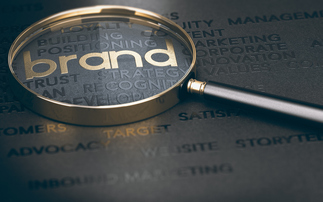There has been a revolution in the measurement of health and fitness writes Dominic Howard.
Next time you are in a crowd of people, consider looking at their wrists. It’s likely some will be wearing outsized digital watches, while others will be sporting, some would say, oddly unattractive rubberised bracelets.
No, you have not walked into a Trekkie convention. Those innocuous bands are ‘wearables’, all set to be the market’s next great disrupter.
Recent years have seen a revolution in technology, offering a new way for people to measure health and fitness. The development of wearable sensor devices has enabled measurement of physical health and fitness in ways that only a few years ago would have required a medical facility, and the world of employee health is beginning to take note.
“The real value of wearables is to make people aware of their own health, because at the moment such awareness is very poor: even knowing when to seek medical help”
The market is moving fast. Consumer demand for devices such as smartphones and a leap forward in battery technology has driven the creation of two parallel markets for wearable health measurement devices: specialist medical devices and consumer wearables.
Devices such as contact lenses that measure glucose levels or smart pills that monitor the body’s response to medication exist, while insoles can measure both weight and physical activity. Clearly, if these are medically necessary there is no barrier to their use and the data derived from them has a clear purpose.
But it is consumer brands, such as Apple, Nike +, Fitbit, Jawbone and Microsoft, to name only a few, that are really driving growth through a range of devices such as smart watches and fitness trackers. Samsung has estimated that at the beginning of 2015 the UK wearables market was worth £313.6m: a 181% increase on the year before, with just over one million devices sold in 2014.
For many people in the UK, the daily tracking of physical activity, nutrition and even sleep using applications on our smartphones or wearable devices are becoming popular ways of self-monitoring our health and fitness. These are the devices the insurance industry is interested in.
Surprisingly, this is not a new phenomenon. While development of wearable sensors began in the 1970s, self-tracking really took off when Wired magazine formalised the concept in 2007 as “a collaboration of users and tool makers who share an interest in self-knowledge through self-tracking”.
The original suggestion was that companies used data from phones, computers and credit cards for advertising, which became what we now call Big Data, but it was also recognised at the time that data could give people new ways to manage and monitor medical problems, help sleep patterns, and improve diet.
One of the most promising uses of wearable devices in the workplace is in healthcare and employee benefit protection products. Many employers pay large premiums to cover their staff.
Dr Robert Kelly, a cardiologist and member of Best Doctors’ medical advisory board, says: “The real value of wearables is to make people aware of their own health, because at the moment such awareness is very poor: even knowing when to seek medical help. There is a functional benefit in being more self-aware and of course the greatest value in the workplace is that if employees are enabled to self-monitor their health and wellbeing they are less likely to fall ill and require time off work to recover.“
Developing a rewards-based programme encouraging policyholders to make healthy decisions is already an established practice in the individual insurance market, and the use of devices such as pedometers is becoming widespread.
It is obvious the same could happen in corporate markets, with a few pioneers such as Vitality already in the running. Using wearable devices to monitor health and wellbeing can offer benefits to both employers and employees; a healthier workforce, reduced health insurance premiums and tangible rewards for employees.
Evidence for this is not short. Both the NHS and the US Surgeon General quote 10,000 steps as the amount necessary to improve health, reduce the incidence of disease and increase life span.
In the US, the National Business Group on Health has concluded that companies with work site wellness programmes enjoy an average 8% increase in productivity.
Employee wellness programmes are also popular: in 2014, 45% of people polled by the US insurer Principal Financial for its Wellness Index said such programmes were a factor when considering whether to remain with an employer.










